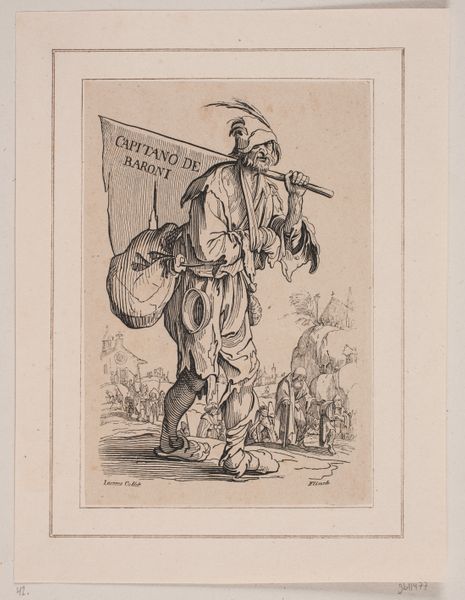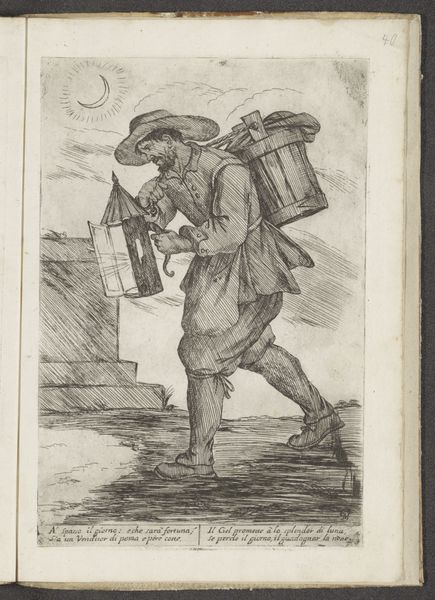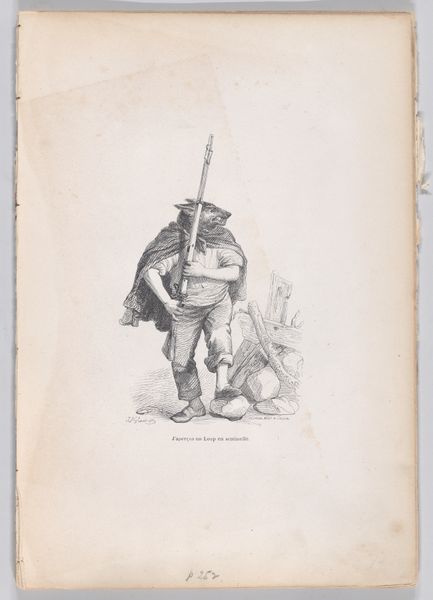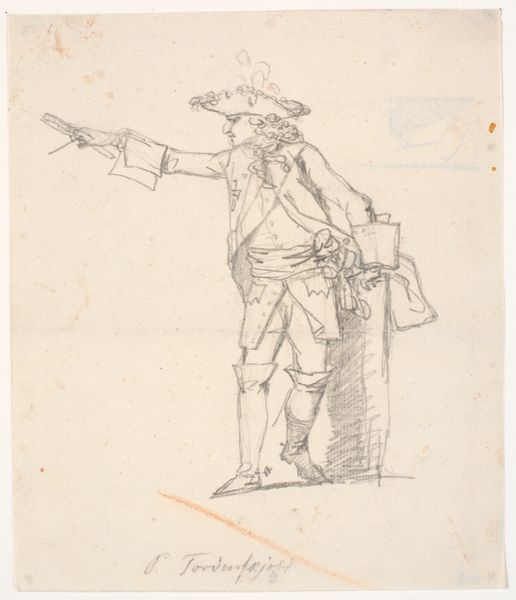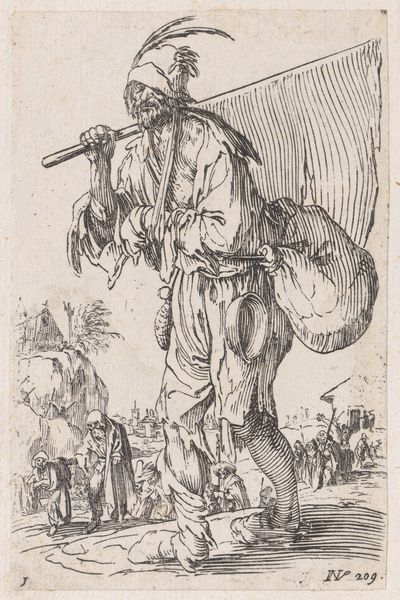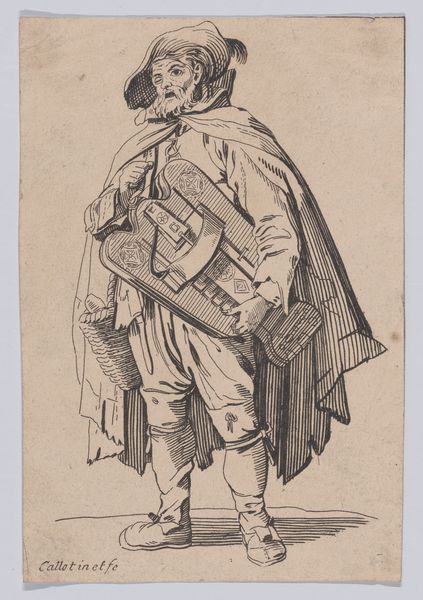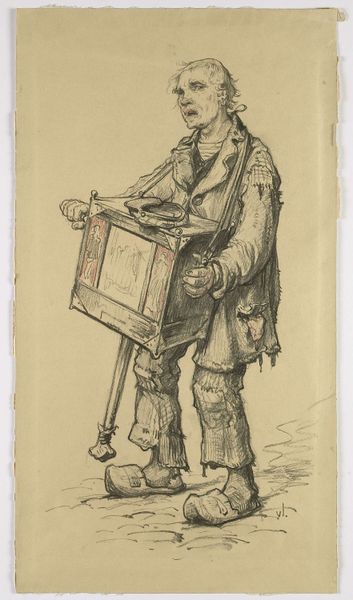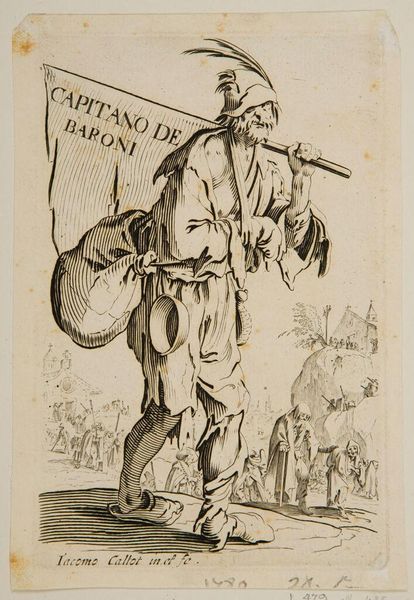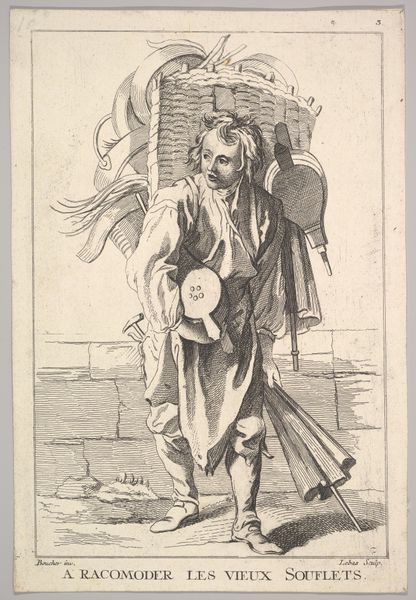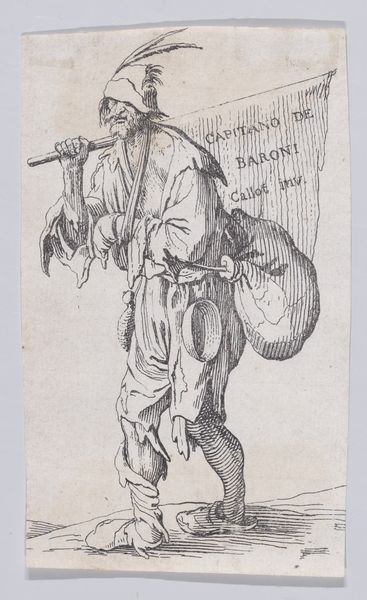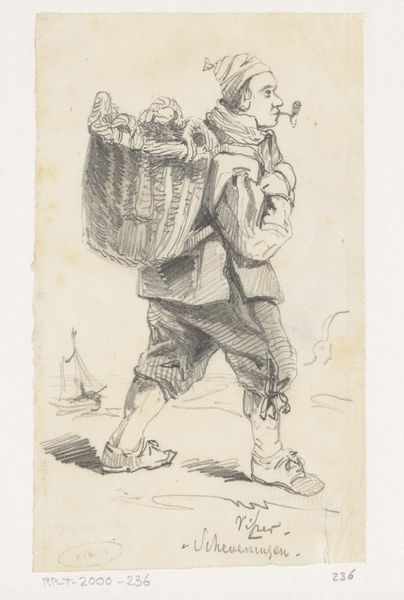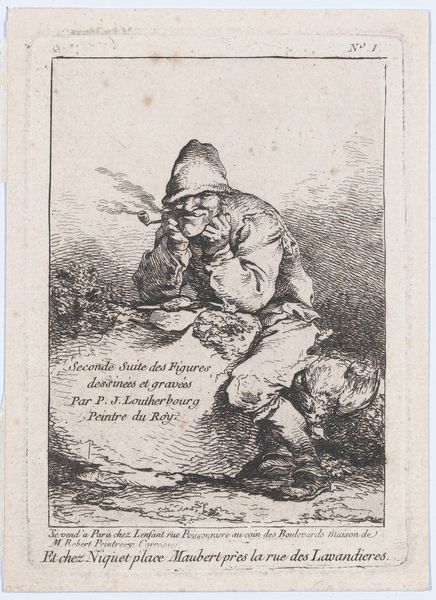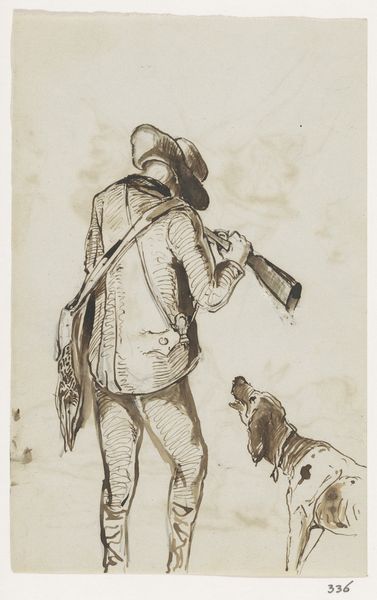
drawing, print, etching, ink, woodcut
#
drawing
#
narrative-art
#
ink painting
# print
#
etching
#
caricature
#
pencil sketch
#
ink
#
woodcut
Dimensions: 189 mm (height) x 135 mm (width) (bladmaal)
Curator: Here we have Andreas Flinch's "Capitano de Baroni," an etching dating from the 19th century. The work presents a somewhat grotesque, yet fascinating, figure marching forward. What are your immediate impressions? Editor: It feels intentionally crude in its production; there's an interesting focus on line, and I'm curious how Flinch manipulated the etching process to achieve this level of gritty detail. The costuming of the central figure suggests a parody of rank or stature. Curator: Precisely. This piece offers a commentary on power and social hierarchy during its time. The 'Capitano' appears burdened and ridiculous. Consider how gender roles and class distinctions would influence the viewer’s reception of such an image. Does this mockery subvert or reinforce existing stereotypes, and which communities does the character invoke or represent? Editor: And consider the materiality—the physical act of etching requires planning and execution. How did Flinch employ specific tools and techniques to emphasize the character’s degradation? Is the relatively inexpensive medium intended for mass dissemination of this parody and social critique? Curator: The caricature certainly allows Flinch to question the accepted norms and perceived authority figures, but through the figure, what commentary does the artwork evoke regarding the perception of those who fail to live up to its values? Perhaps it questions the performance of power itself. Editor: Yes, that feels right. Flinch used a method meant to be duplicated and distributed widely, suggesting that it was more than just a personal reflection on this kind of absurd authority, or that he wished to generate reflection in others. Curator: Indeed. By placing it within our current social dialogues around equality and accountability, the work creates another opportunity to see if any of these discussions continue today. It creates new insights, doesn’t it? Editor: Absolutely. And looking at the labor involved in etching, printing, and distributing, and that production becomes even more interesting as we consider its intent and possible reception, because labor defines it's own class connotations that the art both adopts and critiques.
Comments
No comments
Be the first to comment and join the conversation on the ultimate creative platform.
